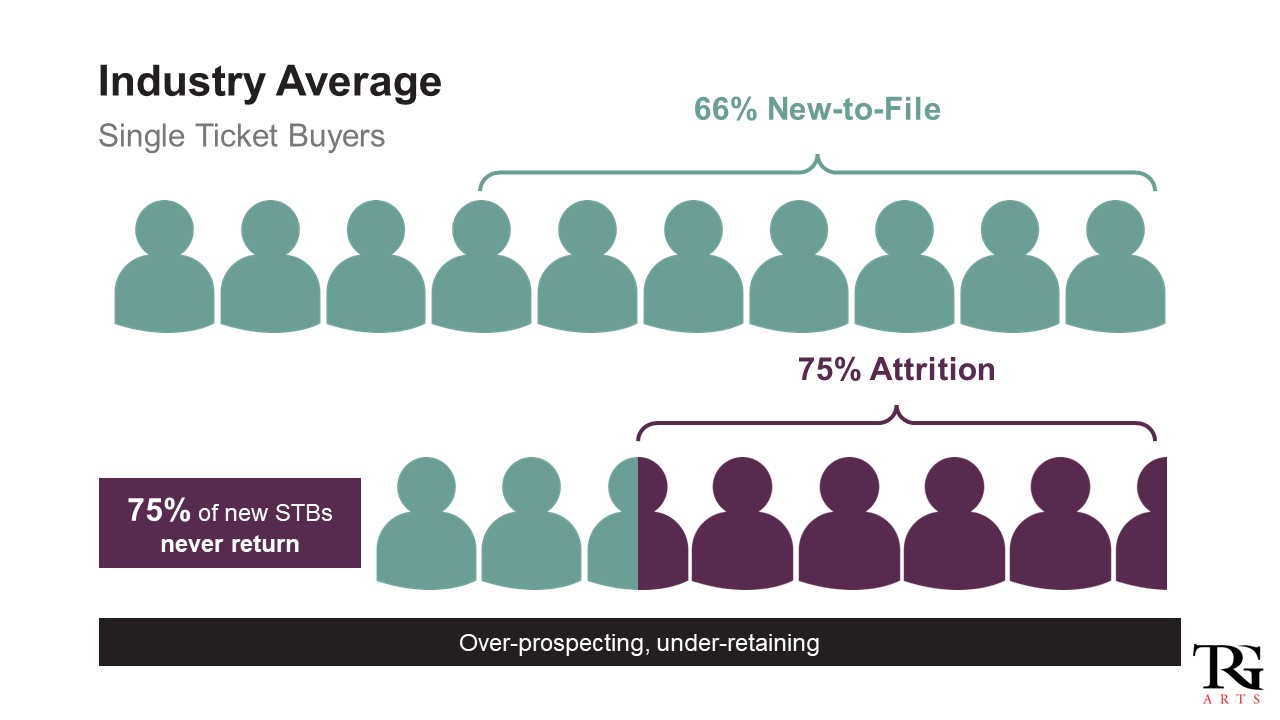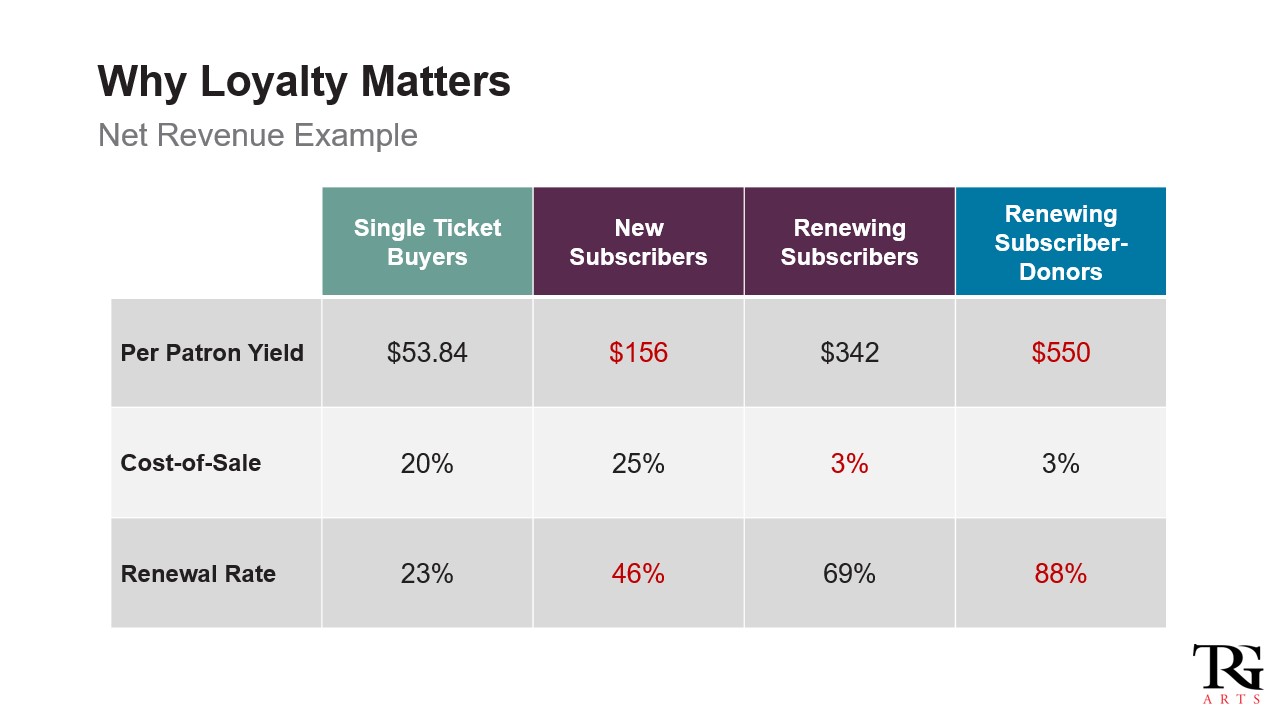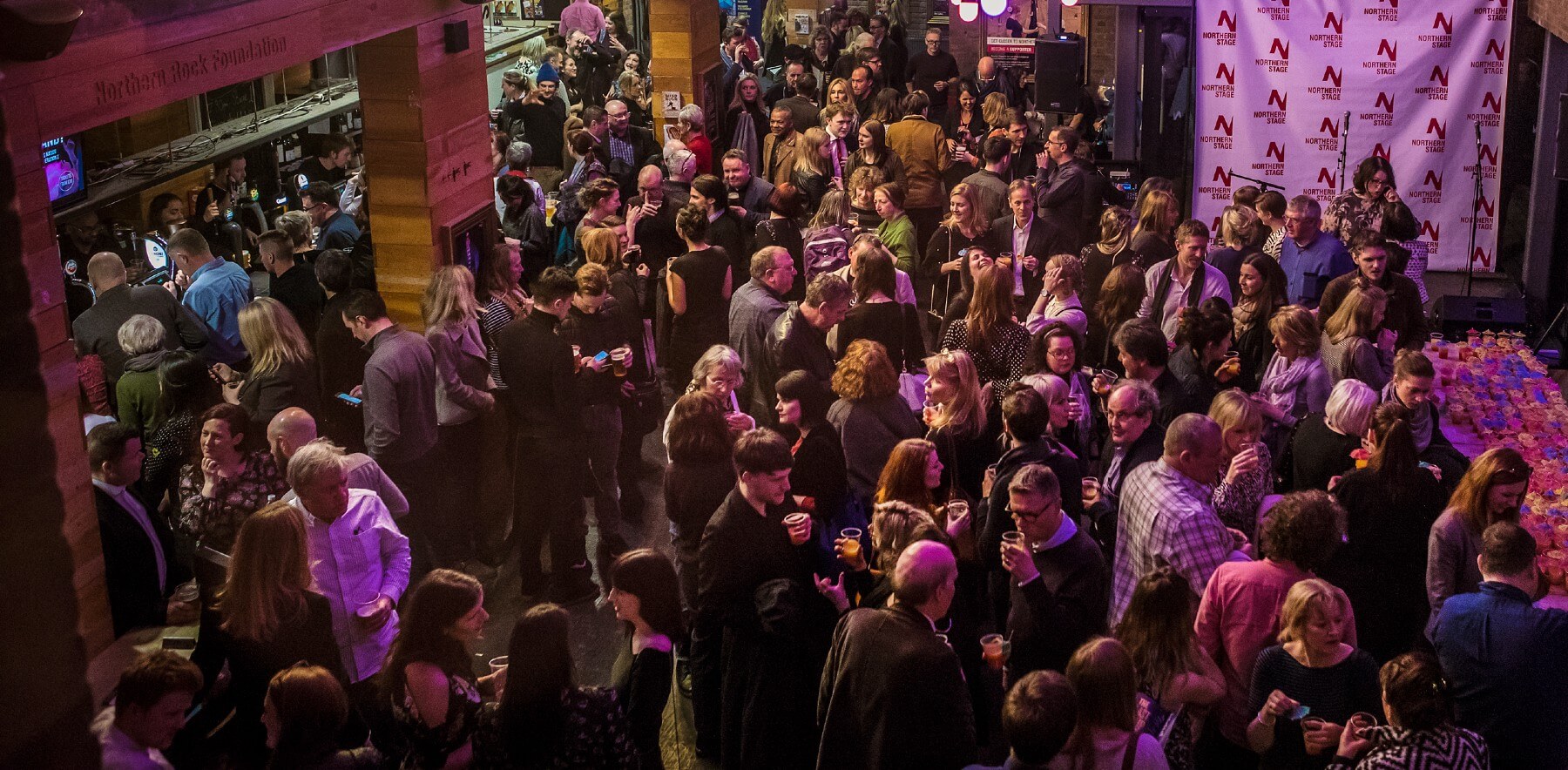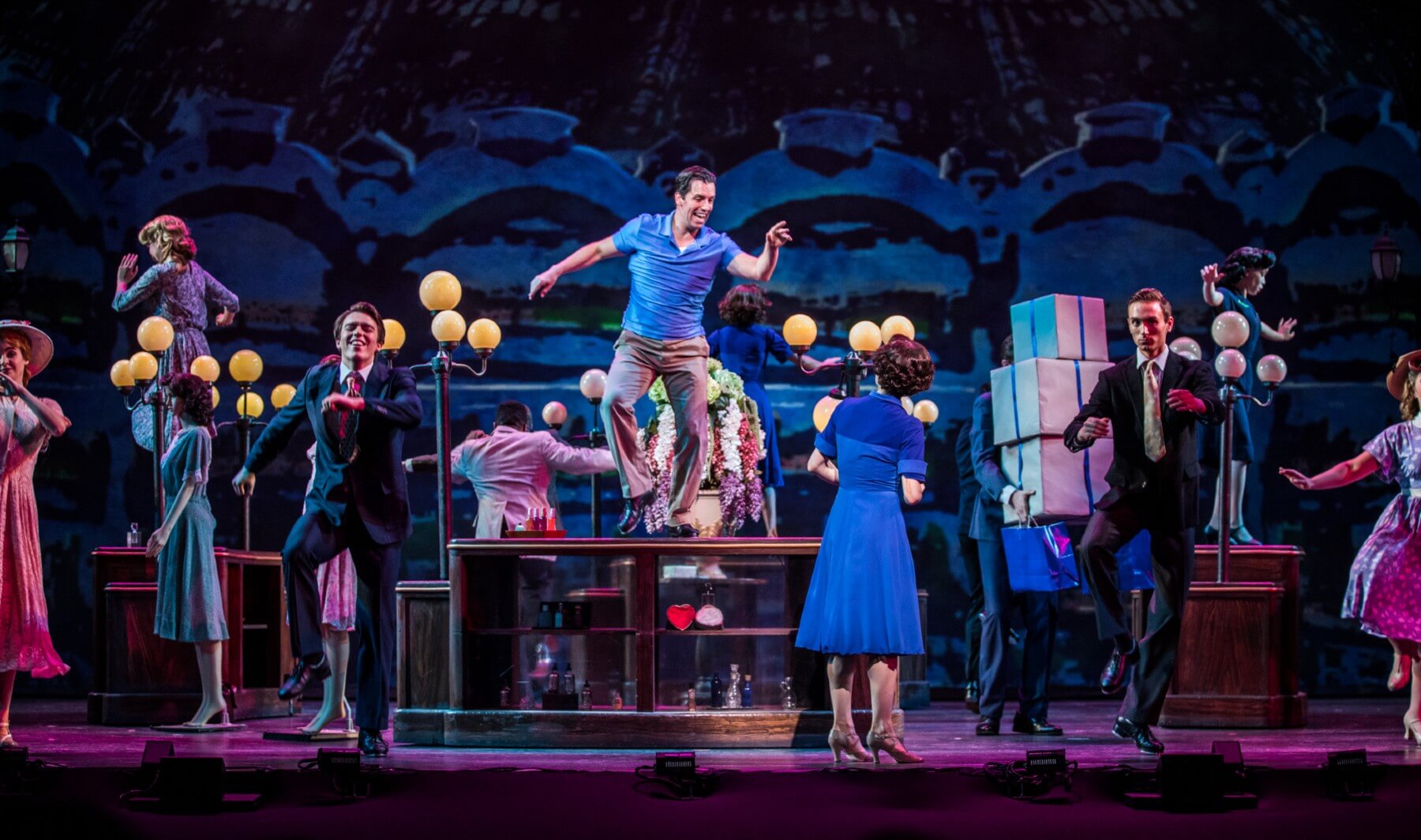What is the right next step for each audience member? A dining experience? Membership? Simply to buy a ticket to the next event?
TRG Arts places a heavy focus on segmentation in all our client work. It’s a cornerstone of any sustainable arts organization. Audiences are never a monolith. Even within each recommended segment below there will be a need for a bespoke approach to messaging depending on past transactions and relationships, particulars about the current campaign, and long-term organizational goals. The following list is designed to help you think through how you are cultivating frequency in key audience segments that should always be considered and acknowledged in your campaigns.
1. First-Timers

Every program is going to bring first-time ticket buyers to your organization. In fact, 66% of all ticket buyers are first-timers industry wide, but data suggests only 25% of them will ever come back to buy a second ticket from you. There is a golden window within the first 12 months from their first attendance to welcome them back with thoughtful messaging directly acknowledging their new experience and inviting them to their next one, perhaps with a discount offer.
2. Repeat Buyers
So. what about that 25% of the first-timers who become second or third-timers? Returning patrons are an important segment as well because they represent opportunity. A repeat buyer is just the type of arts attendee who is primed for a loyalty program. Put some pathways in from of them and let them know the opportunities and value offerings available in your series subscription, memberships or what multi-buying discounts you have. Repeat buyers like you enough to come back, you should always have this segment on your mind when crafting a campaign so you can draw them into deeper relationship with your organization. Its not all about sales, maybe you need to get to know why they came to you in the first place or why they returned. This is also a great segment to seek meaningful feedback from. At TRG we recommend the Net-Promoter Score (NPS) as an effective system for getting feedback.
3. Early Bird Buyers
Early tickets buyers are a bit of their own segment within repeat buyers. They will emerge at the beginning of your on-sale to get the best prices on tickets. This segment is the trained audience. A good number of them will have been to several shows and they know the deal – book early and save. This savvy segment presents an opportunity to go deeper in relationships with your organization too. The numbers make sense to them, so messages focused on the value savings for multi-buys and loyalty schemes again can be useful here. Dance organizations know that they have audience members who will come to The Nutcracker every year, UK theatre has the same type of audience segment for Panto. When January rolls around it’s time to get them sold for their favorites again but look for ways to interest and incentivize them to experience your programming year-round as well.
4. Loyalists (donors/members/subscribers)
You might be thinking to yourself “members and subscribers? But aren’t we talking about single-ticket campaigns?” Yes, but it’s not enough to just get an audience member to subscribe or join a membership level, you want them to use it so they will renew or go up to the next level of membership. Loyalists are part of your orgs extended family in some sense. When they attend a show it’s good time to acknowledge that relationship. By thanking them, inviting them to enjoy the benefits at a higher membership tier or perhaps reminding them of what special projects your organization is building toward, you keep them engaged.
Loyalists may also be interested in some data about how the recent show performed, how many new audience members it drew in, and how it fits into the organization’s plans for the year. You may not need to send such correspondence every time, this segment has a lot of room for variance in your messaging, but look for ways to thank them, inform them, seek their feedback and ask for additional support.
5. New Loyalists (first-time subscribers/members)

Key within this loyalist segment is first-time subscribers and members. You should probably have unique messaging for this segment for their first year, as data shows getting that first renewal is a crucial point to retaining them as a loyalist long term. Loyalists not only have a lower cost-of-sale, but they also spend more and if you can get them to renew once, you can likely keep them renewing long-term. In the chart above, note the sharp increase in renewal rates from new subscribers to renewing subscribers. Less than half of the first-year subscribers renew to a second year, but those who have gotten through that first chance to cancel, they keep renewing at nearly 70%. For UK venues who may not have a subscription model, whatever loyalty program you do offer will have a similar calculus for renewal rates.
A little extra focus and investment in this segment is something we highly recommend. Organizations with varying program types such as PAC’s and orchestras may want to view the program genres households in this segment engaged with in the past to help guide the next appropriate invitation. Keep them using their loyalty benefits throughout the first year- it’s crucial.
6. Lapsed
Definitions of what constitutes a lapsed audience member may differ, but at TRG we consider 18 since last attendance to be lapsed. How you want to craft messaging to this segment may depend on what the relationship used to be, is it a lapsed loyalist or single-ticket buyer? When they become newly lapsed it’s a chance to acknowledge that they haven’t been back in a while, perhaps missed an amazing event, and oh by the way, here is what is coming up next! Discount with discretion for this segment, you want to reward frequent attendance, not once in a blue-moon attendance, but your mission here is just simply to get them back.
7. Prospects
Now that you’ve thoughtfully addressed almost everyone in your database, what about prospects? Your prospecting strategies probably encompass a wide array of marketing tactics. You can view them as a segment that you are trying to get into the first-timer category. One of the best ways you can get prospects to come is by taking care of the segments above and maybe incentivizing or asking them to bring their people. TRG Arts’ Data Center also offers prospecting tools and the ability to trade lists with other local arts organizations to tap into their databases. The messaging for prospects should not be about you, but rather should speak to their values and reasons why they might want to give your organization a try. For more on that, check out It’s Not About You: Patron Values and Arts Marketing.
Go Deeper:
These are some principles of segmentation, but we acknowledge every campaign will surface specific segments and how you speak to them is dependent of your goals. If your team would benefit from some in-depth training on campaign planning and segmentation, TRG offers sprints to do just that. Sprints are quick, data-driven intensives designed to deepen consumer engagement and build financial stability. Campaign Planning Sprints offer proven and replicable strategies focused on audience relationships as the hallmark of building financial stability. Campaign Planning Sprints focus on memberships, subscriptions, single tickets, and annual funds. Each of these engagements is tailored to your organization’s circumstances to maximize results. Check out the landing page for Sprints to learn more. Planning Sprints


